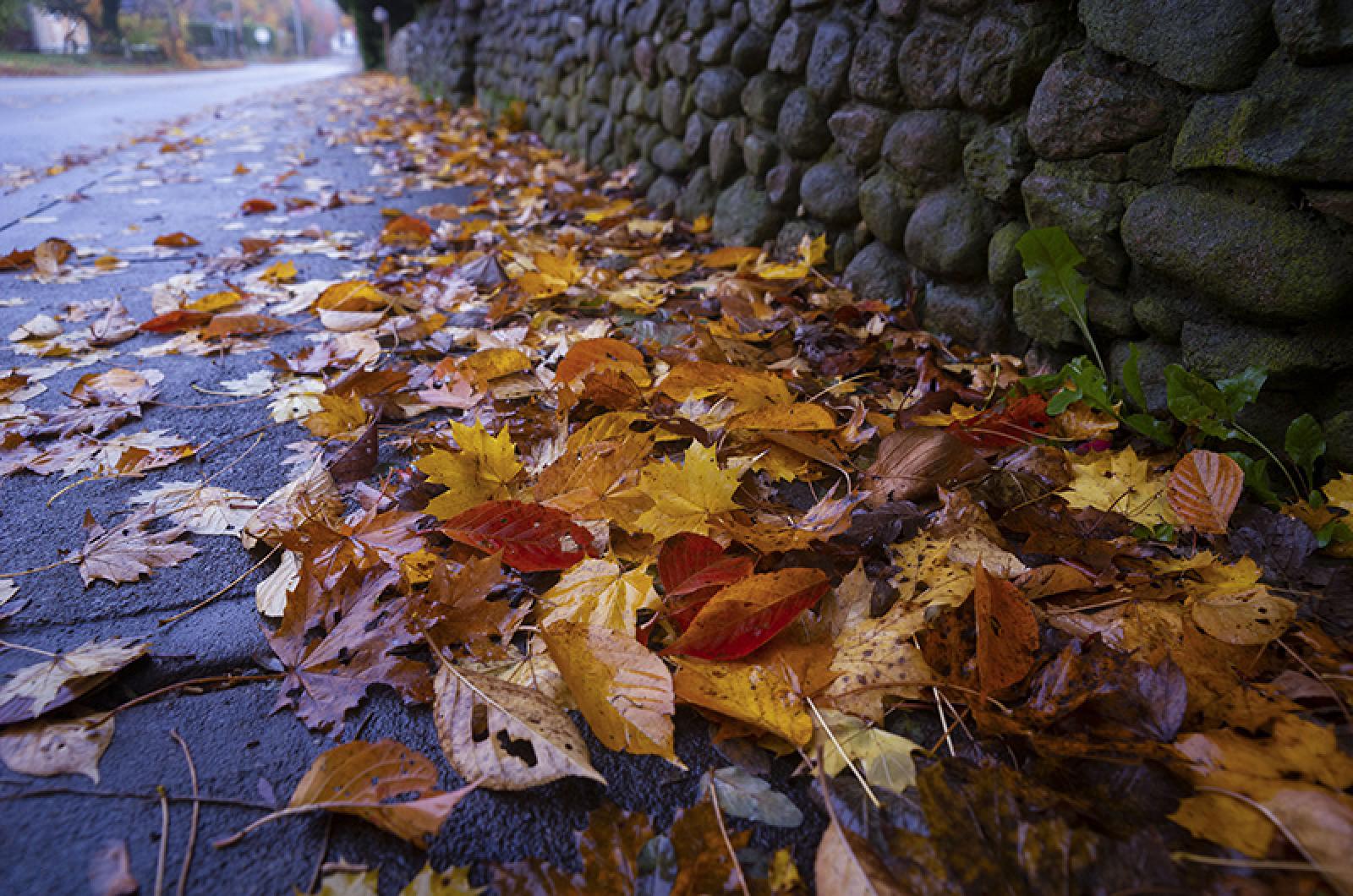French philosopher Albert Camus saw only positives in the change of season. He explained, “Autumn is a second spring, where every leaf is a flower.” As our trees have become naked, those “flowers” are everywhere, covering the paths, roads, woods and lawns. They crinkle underfoot and blow in the wind, accumulating where you want them and where you don’t.
What to do with all of those leaves is a perennial question. You could leave (or leaf) them be, or you could take a more active approach and remove them from your environs.
Your choices of tactics and methods of action are more complicated than they may seem.
I tend to take the hands-off approach since my yard is almost exclusively wooded with no lawn and limited designed landscape. I also like to support the wildlife that finds food, shelter and nesting materials amongst my leaves. My only complaint is that the leaves cover everything and I have twice fallen due to the hazards of sticks, roots, stones and even acorns that are hidden below.
There is some value to limited leaf removal and I would be remiss to not suggest the raking of up to nine feet from the wooded perimeter to reduce tick habitat.
There are those who rake because they insist that a leafy yard is a messy yard. Often it starts with a lawn and a need to maintain and control it. Lawn lovers contend that fallen leaves will damage their greens. This is generally not true. While a blanket of thick leaves that entirely covers an area and remains under cover of snow over the long winter might be a problem, leaves in limited quantities are actually helpful.
Fallen leaves provide a ready source of nutrients and can act as fertilizer for your grass. Instead of removing them, take a few runs with a lawn mower to cut them up and break them down into smaller pieces. These chopped leaves become an organic cover that will be used by earthworms and broken down to richen the soil. And studies show that leaving some leaves can even reduce weeds.
Besides spending lots of time raking and removing leaves, there is the question of what to do with those collected leaves. In many suburban towns, leaf bagging and pickup is the norm. Unfortunately, the disposal of leaves and yard waste has become a significant solid waste problem in our country. According to the National Wildlife Federation, 33 million tons of yard debris are disposed of per year, making up more than 13 per cent of the nation’s solid waste. Composting is a better solution and that rich mulch can be used on your trees and gardens.
Leaf blowers must also be mentioned. These are very common here, with the profusion of landscaping companies that service seasonal and year-round homes. These are my least favorite as they are loud and polluting. Hearing loss can be a serious concern for operators and even nearby neighbors.
And the amount of pollution produced might surprise you. Many of these machines have two-stroke engines that fail to fully combust about 30 per cent of their fuel. This incomplete combustion sends carbon monoxide, nitrogen oxide and hydrocarbons into the air, which adds to smog, acid rain and climate change. To get a sense of their contribution, consider that according to one study, a half-hour of use of a single leaf blower emits as much hydrocarbon emissions as driving a full-sized truck from here to Alaska.
I say leave the leaves and, while you are at it, minimize the lawn. German preacher and author Christoph Christian Sturm also saw the value of leaves: “There is not a single leaf which is a mere ornament,” he said; “All contribute to the fruitfulness of the earth and the support of its inhabitants.”
Suzan Bellincampi is director of the Felix Neck Wildlife Sanctuary in Edgartown, and author of Martha’s Vineyard: A Field Guide to Island Nature.




Comments
Comment policy »